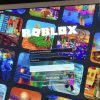
MOSCOW, December 18, Tatyana Pichugina Polyphenols contained in plant foods regulate the intestinal microbiome, protect against cancer, and relieve inflammation. And recent studies have shown that they are beneficial for older people. Which foods are most rich in these natural medicines — in the material.
Property that has caused explosive interest
Chemists a hundred years ago became interested in these organic compounds — primarily as tannins and natural pigments. Many are responsible for the taste and color of plants: for example, capsaicin makes peppers bitter, and anthocyanin colors fruits and leaves red.
Polyphenolssynthesized in plants and algae. They are not directly involved in growth and reproduction, which is why they are also called secondary metabolites. They play a role in photosynthesis, protect against harsh ultraviolet radiation, viral and fungal diseases. In addition, they help to survive stress caused by unfavorable environmental factors, such as prolonged drought.
These compounds began to be especially actively studied after the discovery of their antioxidant properties. More than eight thousand polyphenols are now known. Particularly interesting are food or dietary ones, the use of which is beneficial for health. They are divided into two large classes: flavonoids and non-flavonoids.
The chemical structure helps polyphenols fight the harmful effects of free radicals, which have unpaired electrons on their outer shell, which is what accounts for their high chemical activity. Polyphenols donate the missing electron to free radicals, thereby neutralizing and stabilizing them.
When entering the body with food, most polyphenols do not decompose in the small intestine, but accumulate in the large intestine, where they serve as food for intestinal bacteria. Microorganisms break them down into simpler compounds (metabolites), and thus some of them are absorbed. For this reason, not all the results of past experiments are correct — less polyphenols enter the organs than are contained in food. 
< br />
Bread is everything… whole grain
Not only the leaves or stems of plants, but also fruits are rich in polyphenols, and there are especially many of them in grain products. According to rough estimates, a person receives about a gram of polyphenols per day: ten times more than vitamin C, and one hundred times more than vitamin E.
In a recent study, scientists from Australia calculated the dose entering the body through grain products. To do this, they used data from the Melbourne Cohort Study, involving tens of thousands of people from 1990 to 1994. Volunteers answered 121 questions about nutrition. Scientists were interested in how often and what kind of grain dishes they eat — for example, muesli, boiled rice, bread. It is interesting that a quarter of the respondents are from the south of Europe (Greece, Italy).
The authors took data from the scientific literature on the content of polyphenols in various grain products and obtained an interesting picture. It turned out that adherents of a healthy lifestyle consume the most of these substances — physically active, non-smokers, without excess weight. Moreover, men receive more polyphenols than women. Also, the consumption rate is higher among people who are more economically prosperous. On average, about 87 micrograms per day comes from grain foods.
According to the study, cereals and cereals contain the most phenolic acids and alkylresorcinols, and whole grain wheat and rye are especially rich in them. Oats and corn are sources of lignans.
Chronic processes and the brain
One of the recent discoveries is the anti-inflammatory effect of polyphenols. We are used to thinking of inflammation as the consequences of injuries and abscesses. But many invisible lesions constantly appear in the body, which sometimes do not go away for years. With age, the number of chronic inflammations increases. And this, according to scientists, contributes to aging and the development of age-related diseases, including neurodegenerative ones.
It is now known that these pathogenic processes can be spurred by an unhealthy diet. Part of the role here is played by intestinal microflora, which breaks down incoming products. Its composition depends not least on what we eat. Some foods promote the growth of bacteria that cause inflammation, while others suppress them.
Many studies have shown that dietary polyphenols can fight chronic inflammation. One possible mechanism is the suppression of compounds such as nitric oxide or tumor necrosis factor alpha, interleukin-1B, and inflammatory cytokines. Berries, especially cranberries, are especially useful in this regard.
As scientists from Spain, France and the USA write, dietary polyphenols improve cognitive abilities and sleep. This suggests that their secondary metabolites produced in the intestine may cross the blood-brain barrier. How this happens is still unclear. In addition, there are studies showing the positive role of dietary polyphenols in the treatment of type II diabetes and cardiovascular diseases.
Nutritionists from Harvard Medical School warn that sugary sodas, baked goods, white bread, red and processed meats in the form of sausages and sausages can trigger the proliferation of “bad” microorganisms in the intestines, which contribute to inflammation. Experts advise eating plant foods rich in polyphenols: onions, pomegranate, turmeric, cherries and plums, dark greens such as spinach, cabbage, nuts and grains. Healthy drinks include coffee, cocoa and tea, especially green tea.
In recent work, scientists from the University of Copenhagen showed that polyphenols, when combined with proteins, enhance the anti-inflammatory effect. This happens due to the ability to bind to amino acids. This leads to an interesting conclusion: a combination of foods rich in polyphenols and proteins will bring more benefits. For example, meat dishes with vegetables, coffee with milk or smoothies with yogurt.
And Israeli researchers have proposed improving the Mediterranean diet by adding foods especially rich in polyphenols. In addition to nuts, these include green tea and cocktails made from duckweed of the Wolffia globulus species. In a large-scale clinical study that lasted 18 months, such a diet helped older people improve their vascular health.
All this, however, does not mean that you need to consume pure polyphenols in large quantities, since many of them have strong astringent properties and are not absorbed directly from the intestine. It is better to wait until functional products enriched with polyphenols in an easily digestible form appear.























































Свежие комментарии